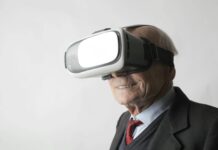The digital divide isn’t just about infrastructure, and it’s about cost and accessibility. And it’s especially prevalent in rural communities.
The FCC’s Lifeline program has helped to alleviate the most significant barrier to connectivity – costs. This is a good thing but not enough to bridge the gap.
Cost
In some communities, the cost of accessing high-speed Internet is prohibitive. This is especially true for residents with low incomes or living in rural areas. In addition to limiting their economic opportunities, digital exclusion can limit healthcare access and educational opportunities.
One way to mitigate the impact of this problem is through a Lifeline assistance program, a government-funded program that provides discounts on communications services to eligible households. The initiative, started in 1985, has recently been updated to incorporate broadband access. Households must participate in specific entitlement programs and earn less than 135 percent of the federal poverty threshold to be eligible for the ACP.
The Lifeline Program is funded through the Universal Service Fund (USF) and relies o
n fees that all subscribers to utility telephony services pay. As the USF moves away from its focus on voice telephony, the program’s contribution mechanism needs to be reformed to distribute costs more evenly across a broader base of subscribers.
Until then, the FCC’s Lifeline program can be valuable in reducing the digital divide and helping families stay connected. The agency should focus on ensuring that households have the means to get the services they need to thrive. It should not restrict eligibility based on whether or not the carrier follows certain business models, which will hurt families like the Mulgraves and others who depend on the program.
Access
The digital divide has many causes, from the cost of service to the lack of device access. Local policymakers have a unique opportunity to identify and address these issues with the best solutions for their communities. These solutions may focus on removing barriers to deployment, encouraging adoption, or offering access to affordable devices.
In rural areas, the main problem is often a need for more infrastructure. According to the FCC, 19 million Americans don’t have access to broadband internet at threshold speeds, most located in rural areas or on Tribal land. Despite this gap, there are some innovative efforts to solve the problem.
For example, when the pandemic hit, some local libraries provided free, open-access community hotspots for patrons with no other way to connect. In addition, some states developed innovative telehealth policies that allow residents to receive virtual health consultations through the Internet.
These efforts, while important, are only a drop in the ocean. Creating a more reliable infrastructure and a dedication to bridging the digital divide in rural America are both necessary components of the answer to this problem. With strong public-private cooperation and a well-defined strategy, these obstacles may be addressed. The greatest method to guarantee that all communities have access to the resources they need and deserve is through this.
Education
A lack of high-speed internet access can profoundly impact educational opportunities, especially for disadvantaged populations. It can limit the ability to apply for jobs that require digital skills, and it can keep students from being able to take online courses or complete their homework at home. These barriers are even more pronounced in rural communities, where broadband adoption rates are lower and connectivity costs are higher.
Lifeline Assistance aids households who meet certain criteria in paying for phone and Internet services, including package deals. The program offers a once-off coupon for equipment, such as PCs, tablets, or laptops, and a monthly discount of up to $30 for phone service and $75 for the Internet (up to two lines per family). The qualifying requirements are determined by income, Medicaid and SNAP enrollment, and Pell Grants receipt for college students.
While a Lifeline subsidy can help people afford high-speed Internet, it cannot address the divide. Policymakers should continue to pursue various strategies to close the gap, including bolstering existing affordability programs and expanding them to include broadband. They should also seek solutions addressing the underlying problems hindering access and adoption rather than focusing on networks. In this way, federal agencies can make a real difference and support the efforts of local leaders to address these issues.
Health
High-speed Internet is sometimes the sole accessible method for connecting with family and medical professionals in remote areas. Seniors who require specific medical care should pay particular attention to this. Elderly people at danger of losing out on hundreds of free apps that encourage healthy behaviors, such as medicine reminders, digital calendars, and activity trackers, if they don’t have smartphones or dependable internet connection.
All Americans’ health requirements may be met with broadband use, especially those residing in rural regions. During the epidemic, broadband has played a significant role in the growth of telehealth. People in far-off places now have a way to access critical medical treatments like telepsychiatry and telecardiology.
However, despite the health benefits of broadband, bridging the digital divide is challenging. Each solution will only work across the country, and policymakers should look beyond infrastructure to consider other factors such as affordability, access, and digital proficiency.
Lifeline is an example of a program that gives low-income households a discount on a home landline phone, mobile phone, or broadband/broadband service. Most Lifeline consumers receive a bundled voice and broadband service. Eligibility requirements vary by state and household, but in most cases, households can only have one Lifeline service at a time. The program’s national verification application system allows consumers to proactively self-verify their eligibility without needing paper documents such as pay stubs and tax returns.
Read Also –Most Effective Tips to Have More Hard Drive Space on Mac


I am a passionate blogger and developer sharing business tips. I Help others solve programming problems on various online forums.
You must follow these marketing tactics to promote your business online.























